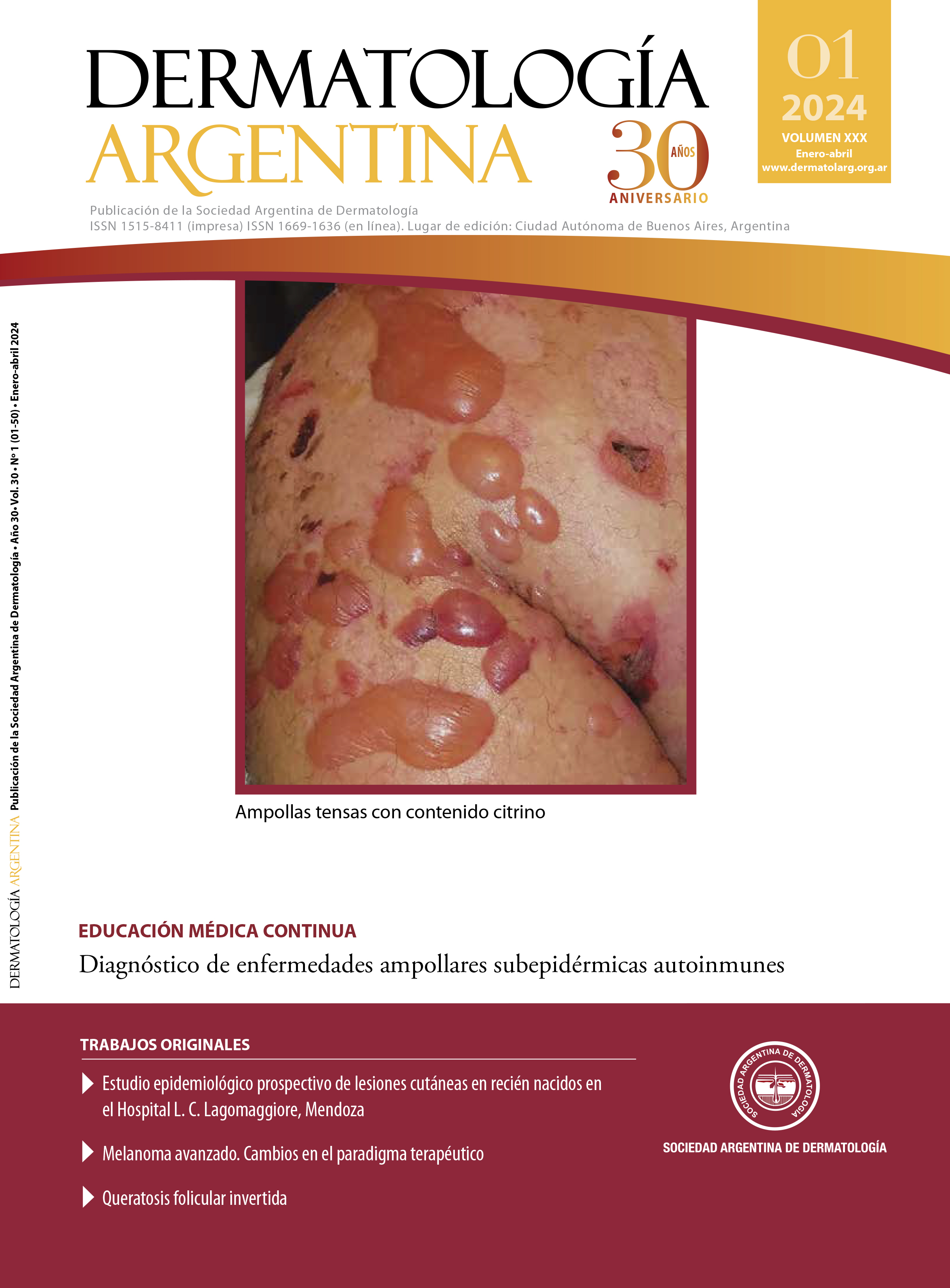Efficacy of spironolactone compared with doxycycline in moderate acne in adult women: results from the FASCE study
DOI:
https://doi.org/10.47196/da.v30i1.2537Abstract
Acne in adult women is characterized by hormonal influence with premenstrual flare-ups in 60% of patients and by bacterial resistance of Cutibacterium acnes due to previous antibiotic treatments. The latter limits the response to the cyclins usually used in acne. Spironolactone inhibits 5-alpha reductase in the sebaceous glands and also the production of LH at the pituitary level. In addition, it has a known effectiveness in this type of acne, although so far its use is outside the package insert and there is a lack of efficacy and safety studies compared to antibiotic treatments.This motivated the authors to conduct this multicenter, randomized, double-blind, prospective, parallel trial to compare the efficacy of spironolactone versus doxycycline in adult female acne. It was called the FASCE study.
133 patients were included. Those with polycystic ovary syndrome were excluded. The treated women used contraceptive methods, mostly hormonal. The study arms were: 1) doxycycline 100 mg/day and benzoyl peroxide for 3 months followed by 3 months of placebo and benzoyl peroxide; 2) spironolactone 150 mg/day and benzoyl peroxide for 6 months. The total follow-up of the patients lasted 12 months.
Evaluations were carried out at 4 and 6 months with the Adult Female Acne Scoring Tool (AFAST) and the Acne Lesion Score Scale (ECLA) scoring systems, counting the number of lesions and quality of life index.
Analyzing multiple variables, spironolactone showed a 1.37- to 2.87-fold superior response over doxycycline at 4 and 6 months, respectively. Spironolactone was well tolerated and quality of life improved in women treated with this medication.However, the authors also noted that doxycycline acted more quickly, with improvements within 2 months; On the other hand, spironolactone required between 2 and 4 months.
Adverse effects prevailed in the group treated with spironolactone, mainly with menstrual irregularities, although they were mild and did not require discontinuation of treatment. There were no cases of hyperkalemia secondary to spironolactone.
It is concluded that although more studies are needed to confirm these findings, spironolactone deserves to be authorized as an effective and safe alternative for the treatment of acne in adult women, being an alternative to antibiotics and potentially to isotretinoin.
References
I. Dréno B, Nguyen JM, Hainaut E, Machet L, ét al. Efficacy of spironolactone compared with doxycycline in moderate acne in adult females: results of the multicentre, controlled, randomized, double-blind prospective and parallel Female Acne Spironolactone vs doxyCycline Efficacy (FASCE) Study. Acta Derm Venereol. 2024;104: adv26002.
Downloads
Published
Issue
Section
License
Copyright (c) 2024 on behalf of the authors. Reproduction rights: Argentine Society of Dermatology

This work is licensed under a Creative Commons Attribution-NonCommercial-NoDerivatives 4.0 International License.
El/los autor/es tranfieren todos los derechos de autor del manuscrito arriba mencionado a Dermatología Argentina en el caso de que el trabajo sea publicado. El/los autor/es declaran que el artículo es original, que no infringe ningún derecho de propiedad intelectual u otros derechos de terceros, que no se encuentra bajo consideración de otra revista y que no ha sido previamente publicado.
Le solicitamos haga click aquí para imprimir, firmar y enviar por correo postal la transferencia de los derechos de autor











